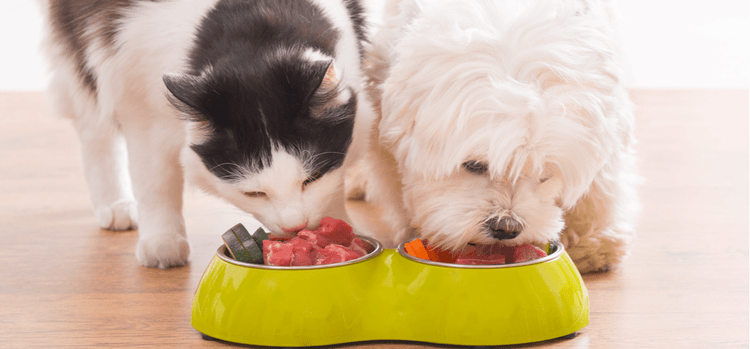
Can Pet Food Make People Sick?
When someone comes down with a sudden bout of intestinal distress, they typically blame it on something they recently ate. A new study suggests, however, that our own meals aren’t always the culprit. Pet food may be responsible for more cases of salmonellosis and other foodborne illnesses than previously believed.
Led by Dr. Yaohua Feng at Purdue University, the study not only explored the risks of serving and preparing pet food, but also exposed the lack of awareness around the issue. Most pet owners simply do not know that their pet’s food can potentially make them ill. As a result, they’re unlikely to take the right precautionary measures or avoid high-risk behaviors.
The study’s 63-question survey found that just over half of respondents wash their hands after feeding their pets. More than three-quarters were not aware of recent pet food recalls and around a quarter did not believe that dry food and treats could present any risk at all.
Pet Food and Contaminants
Several types of fungi and bacteria can affect pets and humans alike. Outbreaks have inspired the Federal Drug Administration (FDA) and manufacturers to recall more than a dozen different varieties of pet foods in 2020 alone.
Salmonella
The Salmonella genus includes some of the most familiar types of foodborne bacteria. In both people and animals, they can lead to symptoms including vomiting, diarrhea, dehydration, and lethargy. Last year, around 150 pet owners came down with salmonellosis (an infection with a bacteria from the Salmonella genus) from contaminated dog treats. It’s been a common culprit for recalls this year as well.
Mold
Fungi like mold can grow on pet foods that have been improperly prepared, packaged, or stored. Contamination may occur at the manufacturing site, in transit, or even while the food is waiting in your pantry. In 2020, several varieties of pet food were recalled as a result of aflatoxin contamination. This particular type of mold can cause diarrhea, vomiting, and yellow coloration if ingested.
Listeria
Listeriosis (infection with the bacterium known as Listeria monocytogenes) affects humans, pets, and livestock animals across the globe. Both pet food and common “table foods” can harbor Listeria if they are prepared or stored improperly or kept past their expiration dates. Symptoms include weakness, vomiting, and diarrhea and can prove deadly in people and pets with compromised immune systems.
Raw Pet Food and Foodborne Illnesses
The debate around the relative risks and benefits of raw pet food is ongoing. While advocates consider raw protein to be an essential component of their pet’s nutrition, organizations like the American Veterinary Medical Association (AVMA) and the Centers for Disease Control and Prevention (CDC) discourage raw food diets.
While the CDC reiterates that they do not recommend raw pet food, they offer guidelines for pet owners who insist on raw diets for their pets:
Preparing Raw Pet Food
- Wash hands thoroughly with soap and hot water after preparing raw food
- Clean and disinfect any surfaces or utensils that come in contact with raw food
Storing and Handling Raw Pet Food
- Keep raw pet food frozen until you’re ready to serve it
- Store and thaw raw food separately from other foods
- Dispose of uneaten raw food promptly
Extra Precautions
- Avoid letting your pet lick your face soon after eating
- Wash your hands and/or face after interacting with a pet who has just eaten raw food
The researchers at Purdue found that just 25% of survey respondents feed their pets raw meat. More troublingly, only half of these respondents reported washing their hands after handling pet food.
Pet Food Safety
While raw pet foods are considered especially risky, nearly any type of food or treat can become contaminated. Dr. Feng and her team contend that consumers need access to higher-quality educational materials to keep themselves informed and safe. They provide several best practices for limiting the risk of infection. In addition to steering clear of raw meat, they suggest washing your hands after any contact with pets or their food, storing foods carefully (and separately), and keeping up with pet food recalls that may affect you and your pets.
More Pet Precautions
Among Dr. Feng’s most notable findings was that the vast majority of pet owners (93%) regularly interact with their pets. This includes potentially high-risk behaviors like kissing pets and cuddling with them. While it’s common to wash your hands after serving food, few pet parents take similar precautions after other interactions. Dr. Feng and her team encourage dog and cat lovers to consider all possible risk factors to keep themselves and their pets safe. “We’re not saying you shouldn’t hug your dog,” she concludes, “but you should know the risks and how to protect yourself against the possibility of contracting an illness.”